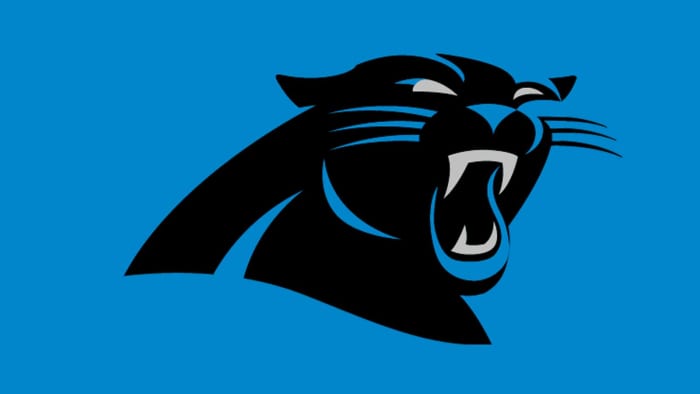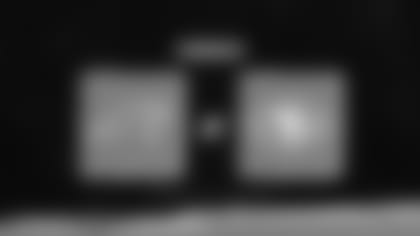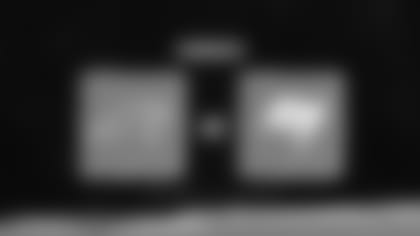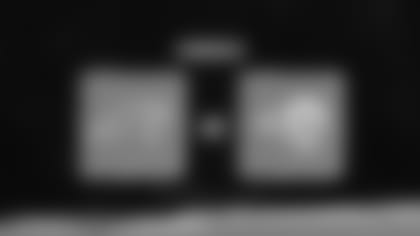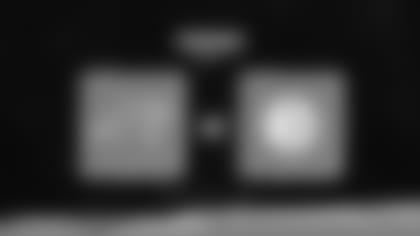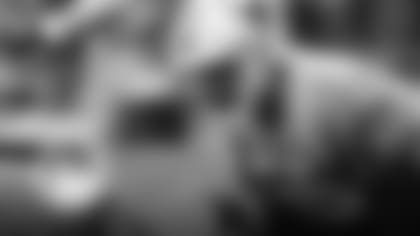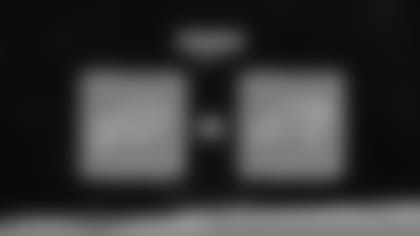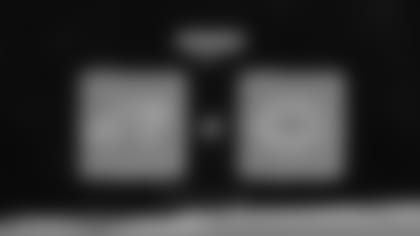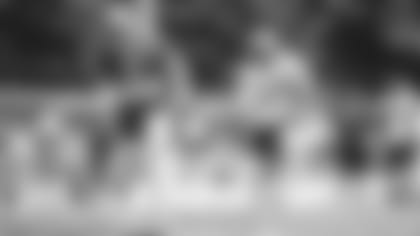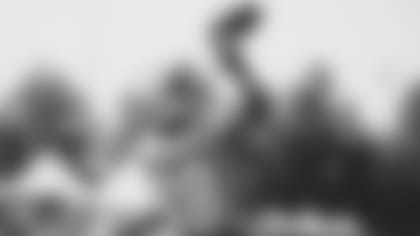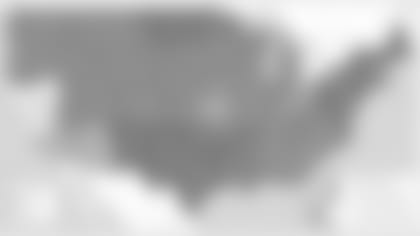There perhaps has never been a player in Panthers history who was quite as star-crossed as running back Tim Biakabutuka, the eighth player taken in the first round of the 1996 NFL Draft.
Biakabutuka now owns four Bojangles' franchises in Augusta, Ga., although he has a business office in Charlotte and lives nearby in Weddington. We caught up with him recently to talk about what he's up to and reflect on his all-too-brief NFL career that was cut short by a terrible foot injury unlike any other before or since in NFL history.
How did you end up owning the Bojangles' franchises?
"I was in the jewelry business, and the business wasn't doing too well. A friend of mine suggested I give Mr. (Jerry) Richardson (owner of the Panthers) a call. So I called Mr. Richardson. He set up a meeting with the CEO (of Bojangles') and got me going."
So do you enjoy it?
"I enjoy the people. Business is tough, but it has been profitable. It's been challenging, but every business is. But I'm enjoying it. We're learning and when we make mistakes, we keep correcting them.
"The business itself is a good business. It's a good model. I bought an existing location that was underperforming and turned it around. Then I got the opportunity to buy another location that was underperforming. I bought that and turned it around – and then we built two more."
Was it easy for you to call Mr. Richardson to ask for advice?
"I stayed in touch with Mr. Richardson even throughout when I owned two jewelry stores. I would meet with him and get his advice. He was advising me even through that. When I was first going into it (buying into Bojangles'), the bank was reluctant to lend me money because I had no experience in the fast food business. So he came with me to the meeting and I got the loan, and so he definitely was a key factor to getting me going."
Let's talk about your playing career, which did not go the way you wanted. How do you look back on it?
"Personally, it was a disappointment. I talk about this all the time. The injuries, the timing of the offense I was involved in. The year it almost all came together was the year I got hurt (the worst). Looking back, it didn't come out the way I wanted it to – but I gave it my best and I made some great friends. I enjoyed my time with the Panthers. I enjoyed the camaraderie. I just wish I had stayed healthy for a couple of years and had a career where I could look back on it and say I did pretty good."
What do you remember about a game at Washington in 1999, when you went off for 123 yards and three touchdowns in the first nine minutes – and then Coach George Seifert took you out?
"I knew going in that Seifert was going to play me the first quarter and then play Fred (Lane) the second. So when it happened, I thought, 'Well, at least you had a good game to show people you have the talent to play in the NFL.'
"The offense we were in at the time was not the best offense for me – or any running back. You're talking about carrying the ball 10-12 times a game. That game, I think I ended up carrying it eight times – but on average, with Seifert, we only ran about 12 times a game.
"Behind closed doors, I asked Seifert to cut me a few times. He wouldn't do it. But hey, it panned out the way it panned out. I met some great people. I met Mr. Richardson. So overall, I think it worked out."
How many injuries did you suffer overall in your six-year career (which totaled just 50 games played)?
"It was unusual. I was floored – because I worked hard. The main injury that I had was my knee (a torn ACL in his rookie season). But then I also had turf toe and a high ankle sprain. And then, of course, my foot at the end of my career. Those were the main things that put me out for weeks at a time."
And that injury in 2001 that ended your career was just an awful injury, wasn't it?
"Apparently I'm the only guy who has ever had that injury in the history of the NFL. My foot just got stuck and never came up off the turf when I was being twisted. It wasn't really a break, but it was dislocated and all the ligaments in my foot were torn – so the bones were all over the place, like a puzzle. That was at Washington, too."
Did you know right then that was the end of your career?
"The way my foot looked, I thought that was the end. Dr. (Robert) Anderson (a Panthers team physician) actually rushed me to the hospital there in Washington. They wanted to do surgery right away. They were worried that the blood supply was shut off from the foot. But he couldn't get permission to perform the surgery, and we were adamant that he should be the one to perform it. So we had to get back.
"Actually, we went on a private plane with Mr. Richardson to rush and get back to a hospital (in Charlotte) to get it done. When I woke up and asked (Dr. Anderson) what did he think, he said, 'Well, it's a tough injury, one that we've never had before in the NFL.' So I did try to come back. I worked out for two years. I got invited to Minnesota, Tampa and Houston – but every time I got there, team doctors wouldn't sign off on it because they'd say, 'We've never seen anything like this.' At that point, I knew it was over."
When you look back on your career, there was a lot of hard luck. But what positives do you take away from it?
"The fans here were great. My teammates were great. Mr. Richardson and his family are great. Overall, if you look at it, the production on the field wasn't there. I told a friend of mine once, 'If I came in and didn't produce because I wasn't good enough, that's one thing. But it wasn't that. It was the injuries.' But that's life. I had a good time and met some great friends, and you move on."


